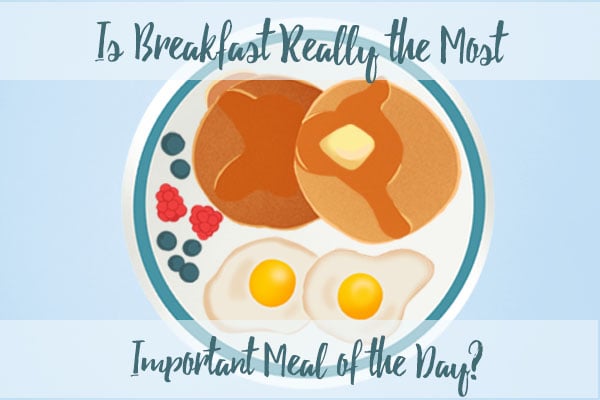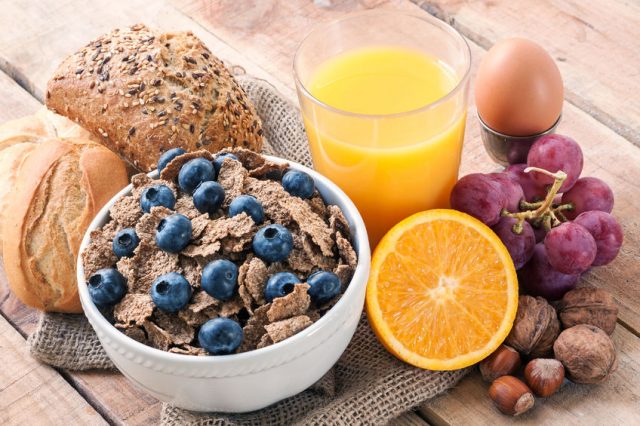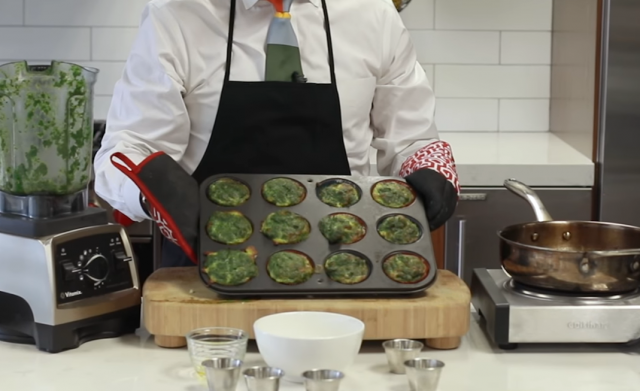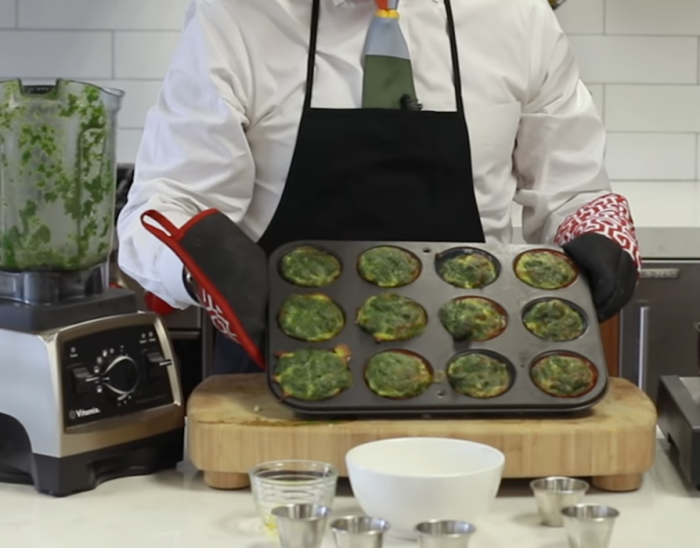
Now, I’m going to level with you here.
Personally, I don’t believe breakfast is the most important meal of the day.
For decades, the food industry wanted us to believe that if we skip breakfast, we might put on weight or lack energy in the afternoon. But, truth be told—health research has shown missing a bagel or a bowl of corn flakes first thing in the morning doesn’t actually lead to putting on weight, health concerns, or fatigue.
Think about it: Our ancestors never rolled out of bed to a bowl of cereal. They had to go out and hunt or forage for it first—which meant their first meal was more likely in the late morning or midday.
Now the purpose of breakfast is to “break the fast,” right? And that should happen when our body tells us it’s hungry.
So, my advice—if you’re hungry, eat breakfast. If you’re not, wait until you’re hungry.
The myth of breakfast.
Turns out these ideas about the importance of breakfast are a myth started by the food companies as a way to get Americans to eat grain products and drink orange juice. But there’s a problem with eating dry cereals, waffles, or french toast for breakfast. They are loaded with lectins and sugar.
And juices? They’re pure sugar! And when you eat the combo for breakfast, they’ll spike your blood sugar. When this occurs, of course, you’ll stay hungrier throughout the day. And you’ll likely feel a bit weaker too. So, you’ll just keep eating.

The right way to eat breakfast.
Whatever time of day you choose to break the fast, you should try to let your breakfast do two things:
1. Deliver healthy fats to your body
2. Deliver healthy greens to your body
If you’ve seen the video on my New Food Pyramid, you know these two groups of food make up the base of the pyramid—they’re the most important foods we can eat.
In order to get more greens and healthy fats into our diet, I’ve developed the following delicious recipe:
Lean Green Egg and Sausage Muffin Recipe:
This recipe is from my new book, The Plant Paradox.
I love this recipe. It’s simple, tasty, and so easy to take with you for a day on the go.
Now you’re going to want to make sure you find Diestel Farms turkey Italian sausage or turkey chorizo. Diestel Farms uses pastured turkey meat; you can find it at Whole Foods or other health foods markets.
If you prefer to make vegetarian “green” muffins, substitute Quorn Grounds for the turkey sausage. There’s no need to fry them, so you can skip step #2 below. Instead, briefly defrost and add to the spinach-egg mixture with a teaspoon of fennel seeds.

What you’ll need:
>> 1 pound Diestel Farms turkey Italian sausage or turkey chorizo
>> 1 10-ounce bag chopped organic frozen spinach (or chopped kale)
>> 5 pastured or omega-3 eggs
>> 2 tablespoons first-pressed extra-virgin olive oil or perilla oil
>> 2 cloves garlic, peeled, or 1 teaspoon garlic powder
>> 2 tablespoons Italian seasoning
>> 2 tablespoons dried minced onion
>> 1⁄2 teaspoon sea salt, preferably iodized
>> 1⁄2 teaspoon cracked black pepper
What to do:
1. Heat the oven to 350°F. Line a standard size 12-cup muffin tin with paper liners (optional).
2. Crumble the sausage or chorizo and put in a non-Teflon or cast iron frying pan. Cook over medium-high heat, stirring frequently, until browned, about 8-10 minutes. Set aside.
3. With a sharp knife, poke small holes in the bag of spinach, put in a microwavable bowl and place in the microwave on high for three minutes.
4. Cut a tiny edge off the corner of the bag, and squeeze as much water out of the bag as possible.
5. Place the drained spinach, eggs, olive oil, garlic, Italian seasoning, onion, salt, and pepper in a high-speed blender and pulse/blend for about one minute or until thoroughly mixed. Transfer to a large bowl and stir in the sausage until well mixed.
6. Fill the muffin tins to just beneath the rim. Bake for 30-35 minutes, until the tops start to brown. Remove from the oven and let cool before removing individual muffins from the liner.
Vegan Version:
You can substitute five VeganEggs for the eggs and one block of tempeh, coarsely chopped, for the sausage, adding one teaspoon fennel seeds.
To serve yourself or your family all week, just keep the leftovers in a covered glass casserole dish in the fridge or wrapped in wax paper in the freezer.
It’s easy to reheat the frozen muffins—just pop them in the microwave on high for one minute or until warm/hot to the touch. Or simply carry one to work, and it will defrost by lunchtime. Peel off the liner and enjoy!
For step-by-step instructions, and to see for yourself how easy it is to make these delicious muffins, watch the video here. You can also find this and other healthy recipes in my New York Times best selling book, The Plant Paradox.
How do you start the day? Are there go-to healthy items you love for breakfast? Comment below.
~
~
~
Author: Steven Gundry
Image: Author’s own
Editor: Danielle Beutell

 Share on bsky
Share on bsky







Read 2 comments and reply